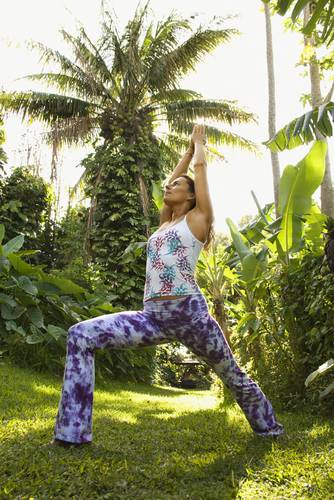Whenever I can, I go to yoga class. The energy of the public class and the creativity provided by a teacher are no match to practicing on my own, even as a teacher myself. Because I work during the time of most yoga classes, though, I often end up practicing at home. Here are my five tips to establish a home practice:
1. Set a Yoga Schedule
Setting a workout schedule is the best way to assure you will actually get yourself into your workout shoes. The same is true with yoga. You have to set the intentionto practice a given number of times each week. When possible, it’s best to choose the exact days and times you will practice before the week even starts. Aim for three times a week in order to see real benefits and progress.
If you’re pursuing a hard practice and doing more like five to seven times a week, make sure to mix up your schedule with some more stretch-based classes to give your body rest. As a side benefit, doing yin yoga at least once a week – a stretch-based yoga with long holds to open up the fascia – is shown to greatly improve mobility in a yoga practice.
2. Aim to Practice Thirty to Sixty Minutes
Many public yoga classes are 75 to ninety minutes. If you try to do this on your own, you may just end up frustrated, discouraged, or distracted. Without the guidance of a teacher and the collective energy of a classroom, it is hard to sustain a lengthy class. You will also be more efficient when practicing on your own, as much of a yoga class is dedicated to providing specific alignment instruction and modifications for those who struggle with a pose. On your own, you should be able to get in a full and complete practice in as little as thirty minutes.
3. Have a Plan and Keep It Simple
If you just arrive at your mat and say, “Here goes nothing,” then you’ll likely end up getting lost. Have a specific plan for what you intend to accomplish on your mat, and keep it simple. Here is an easy outline anyone can follow at home for a nice, balanced practice:
- Ground your energy by starting in a still position. Check in with your body and breath. Two to three minutes.
- Warm up your key muscles and joints with easy movement. Sun salutations are effective for this, but any movements that target the hips, hamstrings, shoulders, spine, and back muscles will do just fine. Five to ten minutes.
- Transition into standing poses. Here is where you can work with your warrior poses, balancing poses, and arm balances. Ten to twenty minutes.
- Choose to do back bending poses or inversions to close your active poses. When doing a home practice in a condensed period of time, it’s best to pick one. Five to ten minutes.
- Counterpose your backbends with a twist and some hip opening. If you chose an inversion, stretch whichever part of your body was weight bearing. For example, if you did handstands, give your wrists a nice stretch. Five to ten minutes.
- Cool down with deeper stretches into the large muscles. You can choose a hamstring opener, hip opener or twist. Three to five minutes.
- Take savasana! It’s important to close your practice with a moment to soak in the benefits of your work. Enjoy a five to ten minute savasana.

4. If You Can’t Do It, Don’t Do It
In a class setting, a trained teacher can guide you closer to poses you haven’t quite mastered yet. On your own, you could harm your body by doing these poses incorrectly. If you’re not comfortable in a pose or aren’t sure of the alignment, then skip it.
5. Be Consistent
Like anything, yoga only delivers benefits after practice. If you want to become more flexible and stronger by using yoga, you have to commit to many days a week for months or years. The good news is you will have little triumphs along the way. Each time you come to your mat, you will notice your body changing and evolving. Enjoy the process.
Photos courtesy of Shutterstock.






